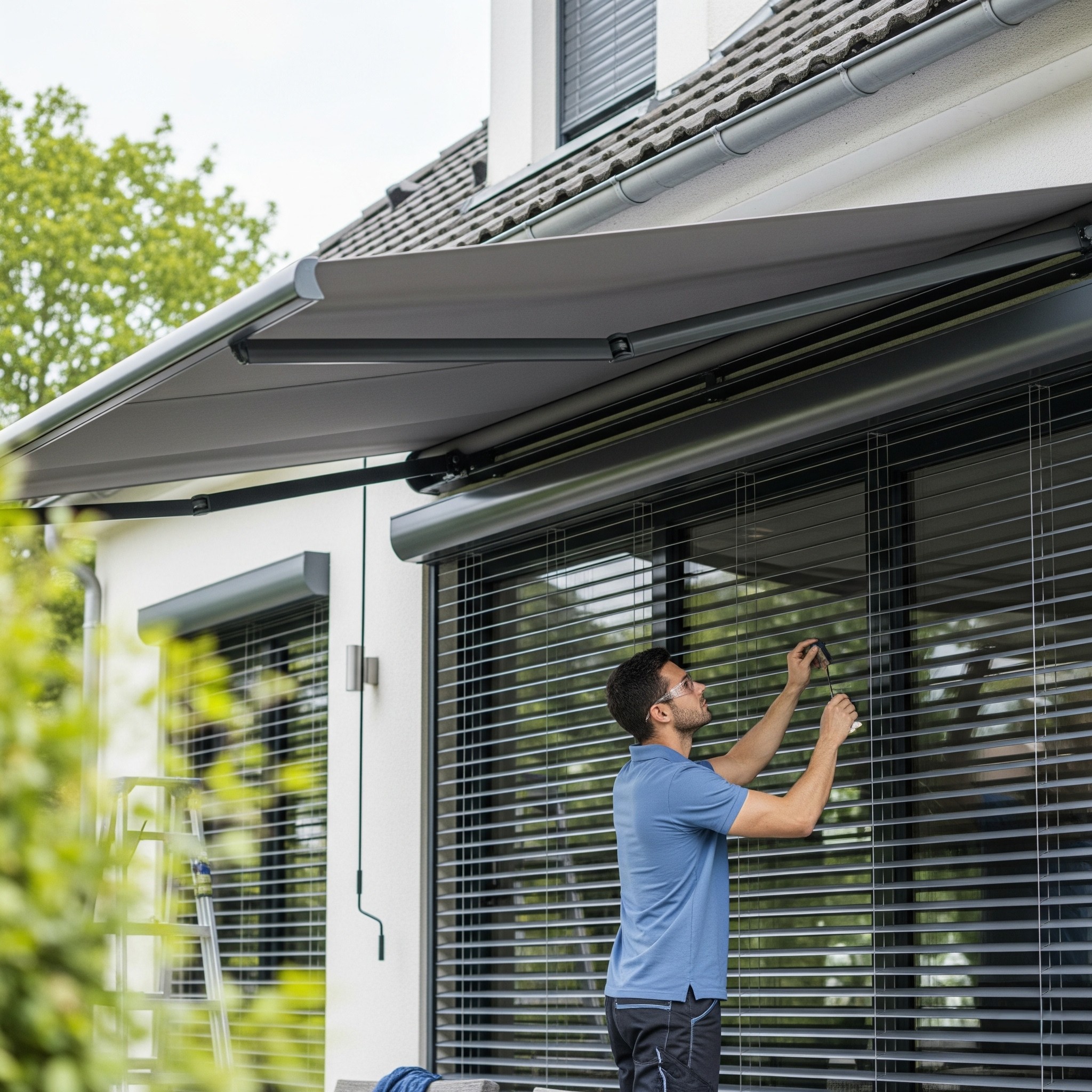Check Awning, Shades, and Blinds
Our Service to regular checks on your awning, Shade and Blinds can help ensure its longevity, functionality, and safety. These are how to perform regular maintenance checks on your awning:

1. Visual Inspection
A. Fabric
- Look for Tears or Holes: Examine the entire surface of the awning fabric for any signs of tears, holes, or fraying edges.
- Check for Mold and Mildew: Inspect for any mold, mildew, or algae growth, particularly in shaded or damp areas.
- Examine Seams and Stitching: Check the seams and stitching for any signs of wear or unraveling.
B. Frame and Hardware
- Inspect the Frame: Check for rust, corrosion, or any signs of structural damage on the metal parts of the frame.
- Examine Fasteners and Brackets: Ensure all bolts, screws, and brackets are secure and not lose or missing.
- Look at Moving Parts: For retractable awnings, inspect the moving parts such as hinges, joints, and arms for any signs of wear or damage.
2. Functional Checks (most problem we found is ant nest, tube, and motor dank)
A. Manual Operation
- Extend and Retract: Manually extend and retract the awning to ensure it moves smoothly without any resistance or unusual noises.
- Check Tension: Ensure the fabric remains taut when extended and that it does not sag.
B. Motorized Operation
- Test the Motor: For motorized awnings, test the motor by extending and retracting the awning using the control switch or remote. Listen for any unusual sounds that might indicate a problem.
- Check Remote Control: Ensure the remote control or wall switch functions correctly.
- Inspect Electrical Connections: Check the electrical connections for any signs of wear, corrosion, or damage.
3. Cleaning
A. Fabric
- Remove Debris: Brush off any loose dirt, leaves, or debris from the fabric.
- Clean the Surface: Use a mild detergent and water to clean the fabric. Avoid harsh chemicals that might damage the material. Rinse thoroughly and let it dry completely before retracting.
- Treat Mold and Mildew: Use a solution of water and white vinegar to treat any mold or mildew spots. Rinse well and dry. By the way, if mold and mildew are firmly entrenched inside the fabric, it cannot get it off.
Note: Fabric color: After cleaning, fabric color of the whole sheet possible to discolored.
B. Frame and Hardware
- Clean the Frame: Wipe down the metal parts, stainless steel parts , aluminum parts with a damp cloth. For stubborn dirt or rust, use a suitable cleaner.
- Lubricate Moving Parts: Apply a silicone-based lubricant to moving parts such as joints, hinges, and arms to ensure smooth operation.
4. Seasonal Adjustments and Storage
A. Monsoon Preparation
- Retract in Bad Weather: During monsoon or severe weather conditions, retract the awning to protect it from wind, or heavy rain.
- Cover the Awning: If possible, cover the awning with a protective cover to shield it from the elements.
B. Spring Preparation
- Inspect monsoon: After monsoon, conduct a thorough inspection to ensure no damage occurred during the off-season.
- Perform Maintenance: Clean and lubricate the awning as part of preparing it for the spring and summer seasons.
5. Professional Maintenance
A. Regular Professional Check-ups
- Schedule Inspections: Consider scheduling regular inspections by a professional service, especially if you notice any issues or if the awning is motorized.
B. Repairs and Replacement
- Professional Repairs: If you detect any significant damage or operational issues, contact us for repairs or replacement parts.
Regular checks and maintenance of your awning, Shades and Blinds can help extend its lifespan and ensure it functions correctly. By conducting visual inspections, performing functional tests, cleaning, and making seasonal adjustments, you can keep your awning in top condition. Additionally, professional maintenance and repairs can address any issues you may not be able to handle on your own.
Ace of Shades Asia: Your professional Maintenance Service for Awning, Shades, and Blinds.
